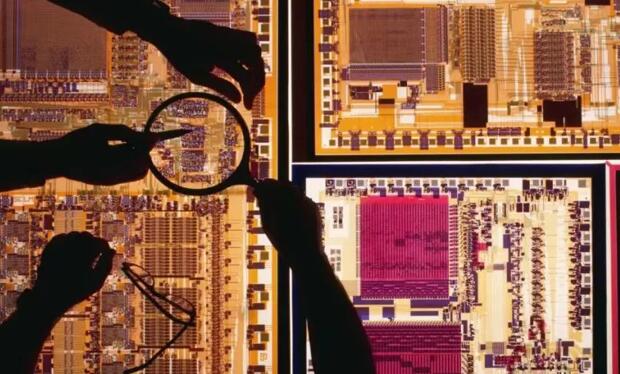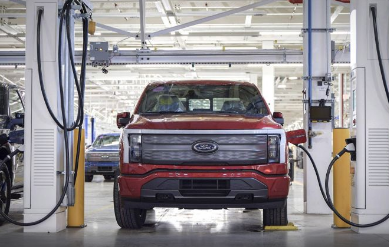Your location:Home >Automotive News >
Time:2022-07-08 12:24:35Source:
Once demand slows down, the contradiction between supply and demand is expected to ease. For chip manufacturers, the most obvious manifestation of the slowdown in demand is the decline in orders and the reduction in inventory.

The chip industry has recently become a hot and cold one.
On the one hand, the global chip shortage caused by the new crown epidemic has limited the production capacityof more and more car manufacturers, delayed the delivery of new cars, and everyone in the "chip shortage" is still at a loss.
On the other hand, chip companies have successively released pessimistic forward-lookingforecasts. Chip prices are sluggish, and quotations from major manufacturers have declined. The entire industry seems to have entered a new stage of the price cycle.
In the past two years, the world has been bitter for a long time.However, judging from the current supply and demand trend, the two-year semiconductor boom seems to have gradually cooled down.
Inventory levels across the semiconductor industry continue to soar as supply pressures continue to topple, but the cyclical law tells us that few players have been able to run all the way with the inventory and order levels of the past year.
The chip shortage has brought an unexpected impact on many industries, and it has also led to an unprecedented large-scale expansion of the chip industry chain.However, crazy expansion is always two sides of the same coin. The invisible giant of the cyclical law is quietly dialing Moving the supply and demand side of the situation.
01
Demand is cold, big factories warn
Memory chip giant Micron Technology announced last week that global smartphone sales in 2022 are expected to fall by about 5% from last year, while PC sales will drop by 10% due to a marked slowdown in consumer demand.
The company is reducingproductionof memory chips and expects revenue to fall by $1.5 billion to $2.3 billion in fiscal 2022.A Micron spokesperson directly used "recession" to describe the next market trend. If the supply and demand trend in the second half of the year is as bad as expected, the company will cut capital expenditures on wafer manufacturing equipment in fiscal 2023.
Intel's chief financial officer, David Zinsner, also hinted at the predicament at an investor conference in early June.
He revealed that the company may encounter some obstacles in the short term, such as inventory decline, and the current situation is much worse than expected this spring.Intel's troubles are mainly from the continued downturn in the PC market. Orders in the second half of the year were much lower than expected. In order to gain more market share, the company has decided to reduce the price of Alder Lake processors.
A month ago, Nvidia slowed its hiring, largely due to less-than-expected growth in its crypto mining and gaming businesses.In the past few years, the company's high-end graphics cards were favored by cryptocurrency and game makers, and were once popular in the market, but as demand in related fields fell, Nvidia had to reduce its system to ensure profitability.
It can be seen that the reason why the big chip manufacturers issued an early warning bomb is, on the one hand, the weakness of the PC and smartphone markets, and on the other hand, it is related to the slump in the cryptocurrency market.
After more than two years of rapid progress, the rush to buy electronic products has gradually faded away, and the hot scene of cryptocurrency mining chips being lined up to buy has gradually come to an end, and the demand has dropped, and many chip manufacturers will welcome A new round of tough times.
But it is worth mentioning that, in a horizontal comparison, the demand for chips in fields such as automobiles and cloud computing has not fluctuated much, and the price is still high.
This scene seemed familiar two years ago.
In 2020, the black swan of the new crown epidemic struck, and home office and isolation became the norm, which directly led to the explosive growth of the demand for notebook computers and smartphones, and sucked up the supply of automotive chips in the short term.
Two years later, rising inflation, the Russian-Ukrainian conflict and the lockdown of the Chinese market due to the COVID-19 epidemic are the core factors contributing to the sluggish consumption, which directly affects the orders and rigid demand for consumer chip applications such as PCs and smartphones.
That is to say, two years ago, automotive chips triggered a wave of large-scale core shortages. Two years later, consumer electronics chips have become the focus of price declines and giant orders.The Wall Street Journal recently wrote that smartphones and PCs The decline in sales and the chip shortage of more than two years may be partially alleviated.
Statement: the article only represents the views of the original author and does not represent the position of this website; If there is infringement or violation, you can directly feed back to this website, and we will modify or delete it.
Preferredproduct
Picture and textrecommendation

2022-08-04 12:57:12

2022-08-04 12:56:48

2022-08-04 12:56:28

2022-08-04 12:56:04

2022-08-04 12:55:36

2022-08-04 12:55:11
Hot spotsranking
Wonderfularticles

2022-08-04 12:54:48

2022-08-04 12:54:20

2022-08-04 12:53:54

2022-08-04 12:53:32

2022-08-04 12:53:03

2022-08-04 12:52:26
Popularrecommendations
